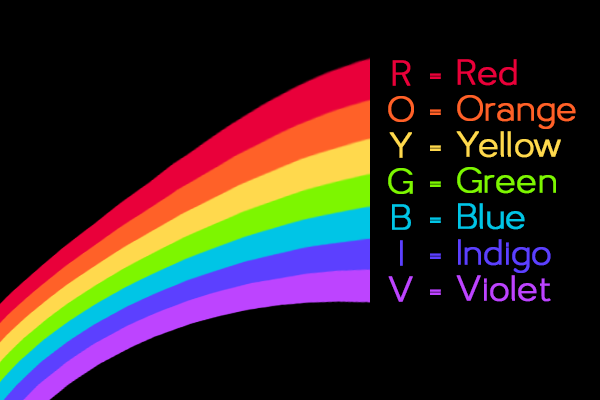

In Christianity this arc corresponds to Archangel Uriel which represent wisdom and energy.

Red is the first colored arc of the rainbow and because of this it has the longest wavelength. While rainbows have significance as a whole, each color has its own significance.
INDIGO COLOR MEANING ON RAINDBOW SKIN
In Amazonian culture, rainbows are associated with less desirable spirits that cause miscarriages and skin disorders. In both Honduras and Nicaragua, people believed that rainbows were a sign of the devil, and it if they looked at a rainbow a curse would be placed on them. In many of these cultures rainbows were associated with dark spirits or demons.

While many religions and cultures view rainbows positively, there are some instances were rainbows are seen as negative symbols. In Norse tradition, rainbows became the pathway or bridge that only celebrated fallen warriors, royalty or gods could cross. In Roman culture, rainbows were believed to be the pathway taken by Mercury the messenger god. In many cultures, rainbows are a sign of pathways, messages or messengers. However, in Polish culture the pots of gold are a gift from angels. Poland also shares the same belief with Ireland about the pots of gold at the end of the rainbow. As many know, in Irish culture, a rainbow is synonymous with elusive pots of gold and leprechauns. In many cultures rainbows were a sign of luck or a gift from the gods. The ancient Arabians attributed the appearance of a rainbow as a gift from the south wind. The Buddhists believed that the seven colors of the rainbow represent the seven continents of the Earth. In Islam, rainbows only consist of four colors-blue, green, red and yellow-which correspond with the four elements water, earth, fire and air. There are some cultures/religions that believe the rainbow represents the elements or the directions of the Earth. Mayan Indians held a similar belief to Christians in regards to rainbows as they believed that after their world was destroyed by fire rain the appearance of a rainbow meant that the gods were no longer angry. The Cherokee Indians believed that rainbows were a representation of the hem of the Sun god’s coat. Other tribes believed that rainbows were a symbol of healing goddesses. This is sometimes referred as the “Rainbow Bridge”. Some tribes believed that rainbows were the bridge between the spiritual and human world. Throughout Native American culture, the meaning and significance of rainbows varies depending upon the tribe. There is also mention of a rainbow in the book of Revelations which uses the rainbow as a sign of the second coming of Jesus Christ. It is believed that the appearance of a rainbow after a storm is a sign that God will not destroy the world again by flood. In Christianity, a rainbow was seen after the Great Flood was set upon the Earth by God to cleanse sin and evil from the world. Religious and Cultural Significanceīecause of their rarity, rainbows hold significance in many religions and cultures. For this reason, rainbows are considered special across many religions and cultures. While the sun often shines after a rain shower, conditions are are not always perfect to produce the appearance of a rainbow. This produces the optical appearance that is a rainbow. Rainbows usually occur after a storm or rain shower, and they are the result of refracted sunlight hitting raindrops. Rainbows are a beautiful phenomenon that bear significance across different religions and cultures.


 0 kommentar(er)
0 kommentar(er)
